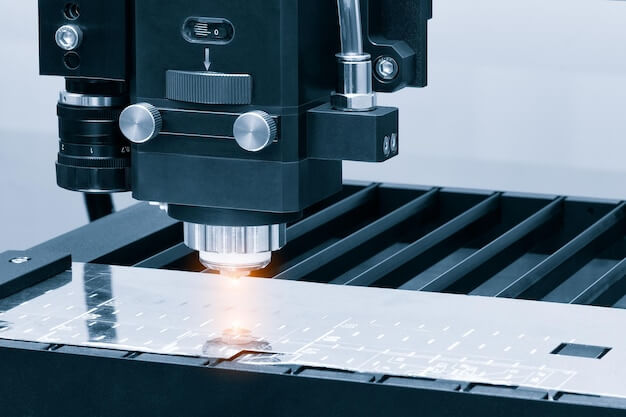CNC Machining and Material Overview: Polyethylene vs. Polypropylene
Computer Numerical Control (CNC) machining is a manufacturing process utilized across various industries for its precision and versatility. It is an automated system where pre-programmed software controls the movement of factory machinery and tools, producing parts with high accuracy.
In CNC machining, material selection plays a crucial part in determining the quality and applicability of the final product. Two commonly used materials are polyethylene and polypropylene. Both belong to the polymer family but have different properties that contribute to their suitability for specific industrial applications.
- Polyethylene, recognized for its flexibility, impact resistance and electrical insulation properties, is often employed when creating products like plastic bags, bottles, toys, and liners.
- On the other hand, Polypropylene has excellent fatigue resistance, elasticity, and heat resistance, making it ideal for automotive components, appliances, medical devices, and more.
Understanding Polyethylene (PE)
Polyethylene (PE) is a type of polymer known for its versatile nature and widespread use in several industries. This plastic material has numerous properties that make it an attractive option for CNC machining.
- Chemical Resistance: PE exhibits excellent resistance to most acids, alkalis, organic solvents, degreasing agents, and electrolytic attack. This property can be vital in industrial applications where the material may come into contact with harsh chemicals.
- Impact Strength: One of the defining traits of PE is its high impact strength, which means it can withstand sudden loads or impacts without deforming or breaking. This characteristic makes it suitable for tough environments or heavy-duty applications.
- Weather Resistance: With outstanding weather resistance, PE can thrive in outdoor applications, resisting degradation caused by sunlight, rain, and general atmospheric conditions.
A classic example of an industrial application where polyethylene shines is in piping systems used for gas distribution. Polyethylene’s chemical, imapct resistance and weather endurance properties allow these pipes to function perfectly while being exposed to natural elements and distributing potentially corrosive substances.
Understanding Polypropylene (PP)
Polypropylene, often referred to as PP in the field of CNC machining, is a highly resilient thermoplastic polymer known for its plasticity and moldability. Its broad array of notable attributes make it a choice material within industrial applications.
- Temperature Resilience: The high melting point of polypropylene allows it to withstand extremely high temperatures without deforming or breaking down. This makes it fitting for use in environments with intense heat exposure.
- Fatigue Resistance: One remarkable feature of polypropylene that sets it apart from other polymers is its fatigue resistance. It can endure repetitive bending, flexing or torsion without substantive wear or failure, thus retaining its initial shape and strength under constant stress
- Resistance to Cracking: With the ability to resist cracking or fracturing, polypropylene offers longevity even amidst harsh conditions. This durability makes it ideal for components experiencing high levels of physical impact, abrasion or pressure.
In an industrial setting, consider a ventilation system exposed to continuous high-temperature output. Materials such as traditional plastics could deform or break down rapidly under such conditions. However, due to its temperature resilience, fatigue resistance, and crack resistance, a vent made from polypropylene would retain structure, function, and overall longevity despite these stringent conditions. Hence why, when looking at practical application, this understanding of polypropylene’s attributes becomes crucial.
Comparing Polyethylene and Polypropylene in CNC Machining
When comparing polyethylene and polypropylene for CNC machining, several key factors should be considered:
- Mechanical Properties: Polyethylene offers lightweight construction without sacrificing mechanical strength, high tensile strength, and resistance to acids and alkalis. On the other hand, polypropylene exhibits high chemical resistance, fatigue strength, and produces a smooth surface finish when machining.
- Industrial Applications: Polyethylene finds applications in the pharmaceutical, construction, chemicals, and food industries, while polypropylene is commonly used in gear and medical product manufacturing.
- Considerations: When selecting materials for CNC machining projects, it’s important to explore non-metallic materials as substitutes for metals and to be knowledgeable about the full portfolio of plastic CNC machining materials.
Choosing between Polyethylene and Polypropylene for Industrial Applications
In the field of industrial applications, choosing the right material for CNC machining can greatly influence product efficiency and outcome. Both polyethylene and polypropylene offer unique properties making them viable contenders in diverse sectors. The choice between the two highly depends on various factors tied to the specific nature of your operation or product.
- Temperature Resistance: Polypropylene is more heat-resistant than polyethylene. Therefore, if your manufacturing process involves high temperatures, polypropylene should be considered.
- Durability: For products requiring robustness, consider polyethylene as it provides greater resistance to wear and tear over time.
- Chemical resistivity: Polypropylene has extensive chemical resistance, making it suitable for environments with exposure to corrosive substances.
Comprehensive understanding of these key differences will therefore play an integral role in decision-making when implementing either material in CNC machining processes.
Other Articles You Might Enjoy
- Understanding the Intricacies of Bead Blasting in CNC Machining(shell mill Zora)
Bead blasting, a subset of shot blasting methodologies, is slowly but surely taking center stage in the field of Computer Numerical Control (CNC) machining. For starters who aren't familiar with…
- Harnessing Bead Blasting in CNC Machining(shell mill Lilith)
In the realm of CNC machining, precision and surface finish are paramount. Manufacturers are constantly seeking innovative techniques to enhance the quality and aesthetics of their machined components. One such…
- Innovative CNC Machining for Advanced Spacecraft Components
Introduction: CNC Machining and its role in Spacecraft Components Computer Numerical Control (CNC) machining has, over the years, proven to be one of the most integral pillars within manufacturing industries.…









